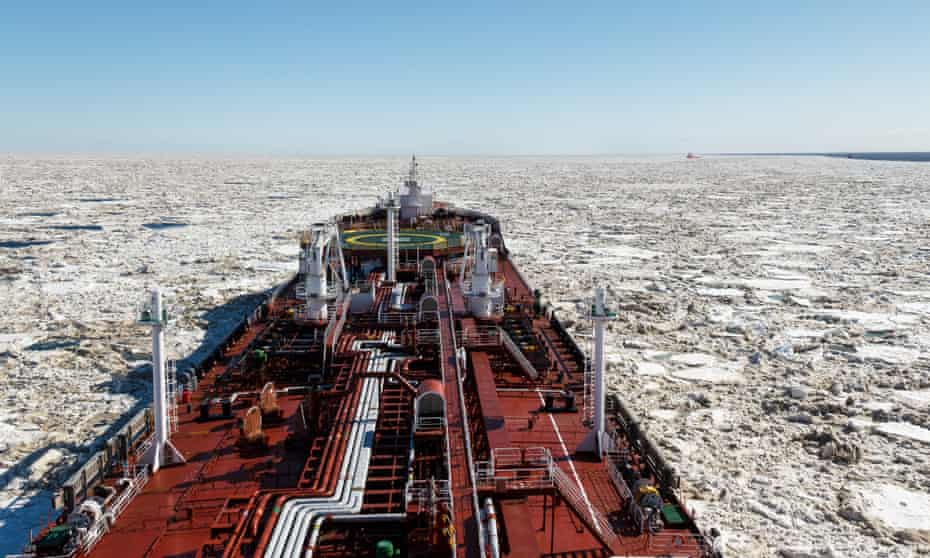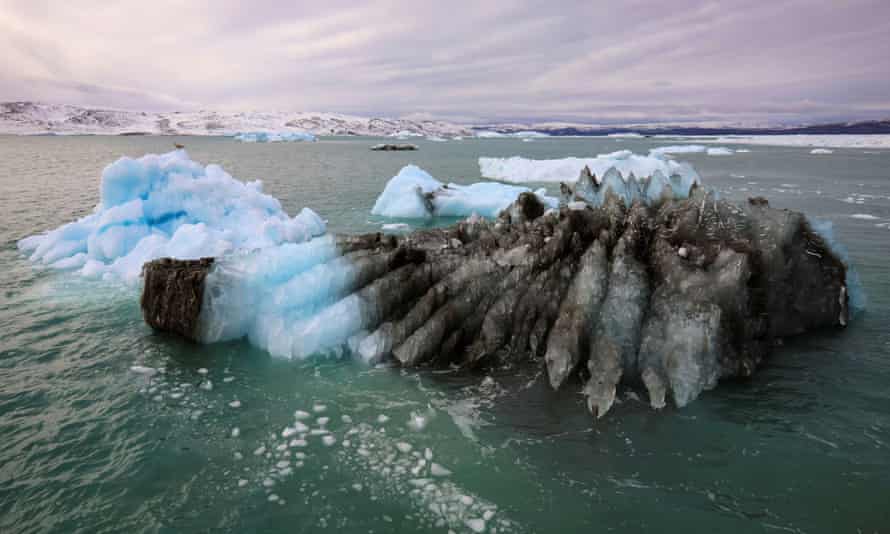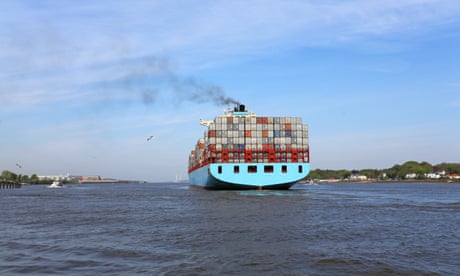Extract from The Guardian
Seascape: the state of our oceans
As climate crisis allows new maritime routes to be used, sooty shipping emissions accelerates ice melt and risk to ecosystems.

Mon 11 Apr 2022 00.00 AEST
Last modified on Mon 11 Apr 2022 00.02 AESTIt has been made possible by the climate crisis. Shrinking polar ice has allowed shipping traffic in the Arctic to rise 25% between 2013 and 2019 and the growth is expected to continue.
But Arctic shipping is not only made possible by the climate crisis, it is adding to it too. More ships mean a rise in exhaust fumes, which is accelerating ice melt in this sensitive region due to a complex phenomenon involving “black carbon”, an air pollutant formed by the incomplete combustion of fossil fuels.

When black carbon, or soot, lands on snow and ice, it dramatically speeds up melting. Dark snow and ice, by absorbing more energy, melts far faster than heat-reflecting white snow, creating a vicious circle of faster warming.
Environmentalists warn that the Arctic, which is warming four times faster than the global average, has seen an 85% rise in black carbon from ships between 2015 and 2019, mainly because of the increase in oil tankers and bulk carriers.
Yet unlike other transport sectors, including road, rail and inland waterways, where air-quality standards curb emissions, no regulations exist for shipping. Last November, the International Maritime Organization (IMO) adopted a resolution on the use of cleaner fuels in the Arctic to reduce black carbon, but left it as a voluntary move.
Last week, the IMO was once again in the spotlight. A coalition of environmental groups warned a meeting of its pollution, prevention and response subcommittee that its resolution did too little to tackle the Arctic’s climate crisis. They submitted a paper calling on governments to agree mandatory regulations to slash shipping’s emissions of black carbon in the region.
“We’re hitting this cascading tipping point for the climate,” said Dr Lucy Gilliam, senior shipping policy officer of Seas at Risk. “With the IPCC report, we are seeing again why we need to do something about black carbon urgently.”
Last Monday, scientists from the UN’s Intergovernmental Panel on Climate Change (IPCC) warned it was “now or never” for action to stave off climate breakdown. They concluded that the international community was underperforming on climate commitments, but singled out the shipping sector and the IMO for particular criticism.
The pollution from global shipping increased by 4.9% in 2021, according to a report by the shipbrokers Simpson Spence Young.

If all shipping using heavy fuel oil in the Arctic switched to cleaner distillate fuel, it would cut their black carbon emissions by 44%, the Alliance said. Heavy fuel oil or bunker fuel is a viscous, low-grade, cheap oil contaminated with substances including nitrogen and sulphur, which make it more polluting than distillate.
If all ships also installed diesel particulate filters, which reduce emissions by capturing and storing soot, black carbon could be cut by a further 90%.

However, others argue that the IMO’s 2021 ban on heavy fuel oils in the Arctic – a move aimed at reducing the risk of spillage and expected to come into effect in 2029 – will see a reduction in black carbon.
“The tide is swimming in the same direction already,” said Paul Blomerus, director of Clear Seas: Centre for Responsible Marine Shipping, an independent research institute in Canada funded by industry and government. “Many Canadian-flagged ships are moving towards distillate fuels, ahead of the IMO ban, which will have the added effect of reducing black carbon emissions.
“You could argue that the IMO only has a certain amount of bandwidth and we should concentrate on decarbonisation and how to get to net zero by 2050.”
He also noted the major role that Russia played in Arctic shipping. “Whether they would abide by the IMO’s regulation is anyone’s guess in the current circumstances,” he said.
No comments:
Post a Comment